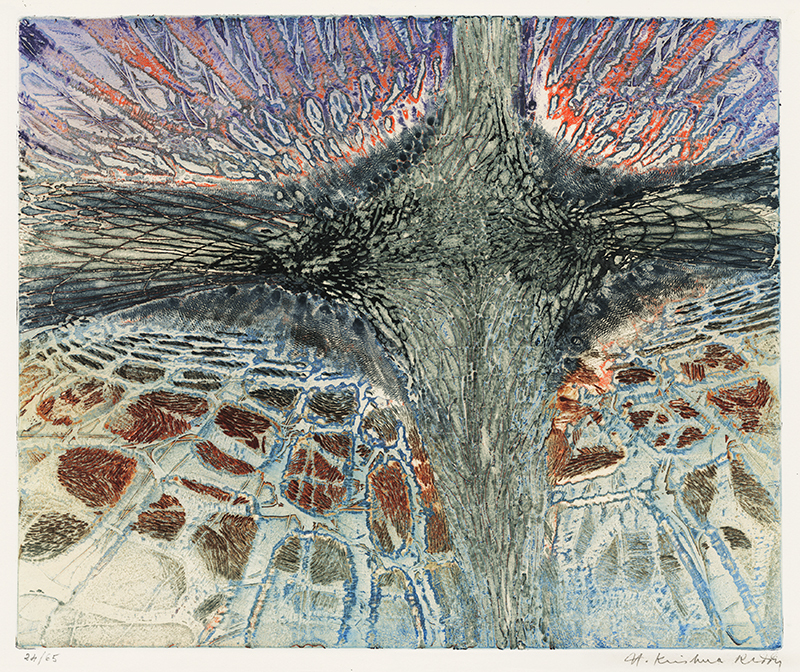
19th, 20th & 21st Century Fine Prints
707-546-7352 · fax 707-546-7924 · web: www.annexgalleries.com · email: artannex@aol.com
Flower by Krishna Reddy

Flower
Krishna Reddy
Flower
Krishna Reddy
1925 - 2018 (biography)Krishna Reddy was one of the early experimenters at Atelier 17 using the simultaneous or "viscosity" method of printing intaglios. He is credited with developing the technique so that a consistent printing could be done and a fairly uniform edition printed.
Reddy was instrumental in helping to create the simultaneous color printing method at Atelier 17 in the 1950s. This print displays Reddy's work with the technique in its prime, with the delicately mapped color in a spatial, atmospheric composition. His unique style was widely influential, and he would teach his printmaking method at schools and workshops worldwide.
Reddy commented about his work using this method:"The plate takes on an added dimension and becomes like a sculpture. I started repairing the crevices or pits caused by fault bites. I scraped and burnished some of them. I rolled the colors with hard and soft rollers. The understanding of the viscosity of color inks helped in controlling the superimposition of wet color layers simultaneously on the same plate. I was surprised at the way the roller colors integrated the whole composition."
This print reveals the three dimensionality of the printing matrix. In the case of a printing matrix with three distinct areas; textured, original surface, and areas that have been smoothly etched to a lower level, each area will print in a different color. The matrix is inked and wiped as an intaglio using etching ink for the first color. A hard roller with slightly runny ink is used to put a layer of ink onto the original surface for the second color.
Etching ink is often fairly viscous, but has very low tack so the second color does not adhere to the textured areas. A soft roller with stiff ink is rolled over the entire plate for the third color. The matrix is printed just like any intaglio. When this is carefully done each color is distinct and the process is repeatable. Each step in this process is sensitive to the point that most printmakers employ it for producing monotypes and monoprints rather than editions.
